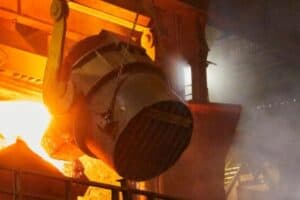Nersa proposes a move away from the current revenue-based approach, to a cost-to-serve approach.

A discussion paper published by energy regulator Nersa on Heritage Day, September 24, calls for a complete overhaul of the ways Eskom’s tariffs are set.
It proposes a move away from the current revenue-based approach to determine electricity tariffs in South Africa to a cost-to-serve approach that might benefit large power users who have been subsidising residential customers for years.
Stakeholders have until October 29 to submit written comments, after which Nersa will hold public hearings via Microsoft Teams. The regulator hopes to finalise the new methodology by mid-November.
It is expected to decide next week whether to reject Eskom’s tariff application for the next three financial years, which was submitted early in June.
This application has been drafted in terms of the rules for the current tariff period, referred to as Multi Year Tariff Determination 4 (MYPD4).
If Nersa approves this proposal from its own electricity sub-committee (ELS) to send Eskom back to the drawing board in terms of the new rules, it will have to devise an interim measure for determining at least the 2022/23 tariffs, since it takes Eskom about a year to draft a tariff application.
The matter was discussed by the ELS behind closed doors last week.
Timelines
Eskom’s tariffs for 2022/23 have to be finalised by March 15, when the utility must table the tariffs in parliament. The tariffs take effect on April 1 for Eskom’s direct customers and municipalities increase their tariffs for end-users on July 1.
Ideally Eskom’s new tariffs should be known by December for municipalities to incorporate them in their budgets, which are implemented on July 1.
If Nersa fails to approve Eskom’s tariffs in time, it will not be able to legally recover any revenue.
In its discussion document Nersa says the current revenue-based methodology has “fallen short in providing stable prices”.
Disastrous decade
Over the last decade electricity prices have increased by 175%, outstripping the consumer price index (CPI).
The availability of Eskom’s generation plant plummeted and the utility managed grid stability by implementing rolling blackouts.
Escalating prices and unreliable supply has constrained economic growth as customers lowered their demand, sought alternative sources of energy, closed down or requested special pricing agreements.
Eskom’s sales fell by 14.7%.

Nersa therefore argues that an appropriate new methodology must be developed to ensure price stability.
Messy system
The current methodology puts the regulator in an impossible situation where it determines Eskom’s revenue and tariffs based on its cost and sales, while Nersa has no control over sales.
When the expected sales are not realised, Eskom under-recovers its promised revenue. This then has to be recovered at a later stage through the Regulatory Clearing Account (RCA), which results in a different price path than anticipated.
The current system is further based on lumping costs together to determine Eskom’s total revenue and average price.
“Because the individual retail tariff[s] that are then derived from the averaged costs bear no resemblance to the actual costs incurred by the utility to deliver a service to individual customer groupings, this has in fact prejudiced customers, especially industrial and manufacturing customers by making them pay for costs they do not contribute to.”
Average pricing does not send the right pricing signals to different users regarding the cost their consumption imposes on Eskom, Nersa argues.
“The enemy in the current electricity pricing approach is the ‘averaging’, which results in inefficiencies, cross subsidies and socialisation of costs, which is central in revenue determination.”
In the consultation paper Nersa proposes three critical principles:
- Activity-based costing: Desegregation of generation, transmission, distribution, system operations, market operations, trading and other ancillary services;
- Type of service costing – different load profiles: baseload or constant demand, mid-merit or semi constant demand, peak or variable demand and ad hoc or emergency demand are met by different generating units and the associated costs differ; Nersa says these should be recognised; and
- Marginal pricing to set tariffs: The costs associated with different plants utilised to meet a specific demand also differ, and the question is how are these different plants deployed. “The answer lies in the how the market would have dealt with the problem, which is that the cheapest plants in each service bracket would be deployed first in the order of their cost merit and the costs associated with the last plant that ‘balances’ the market will determine the price for that service.”
According to Nersa the idea is that the provider of each service – for example, each power station – will, based on its cost, apply for its own tariff, which will include some profit.
These individual tariffs will be ringfenced, and under an independent market and system operator, this marginal pricing will ensure efficiency and the appropriate order or deployment of different generation units.
The discussion paper also points to other key determinants of the new methodology, namely the separation of trading from distribution, allowing bilateral contracting and the requirement that different services be priced and contracted separately.
The regulator poses 11 sets of questions for stakeholders to comment on.
The discussion document can be downloaded here.
This article first appeared on Moneyweb and was republished with permission. Read the original article here.






